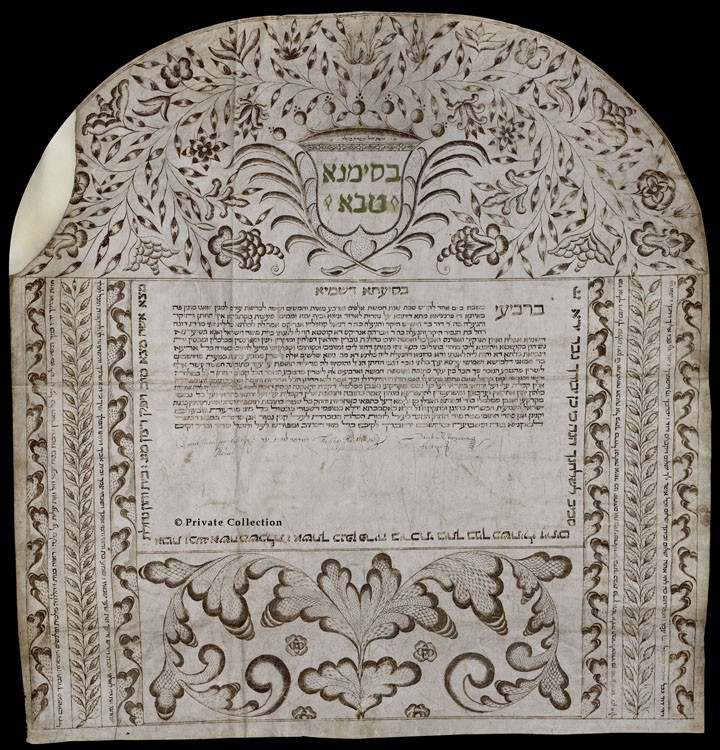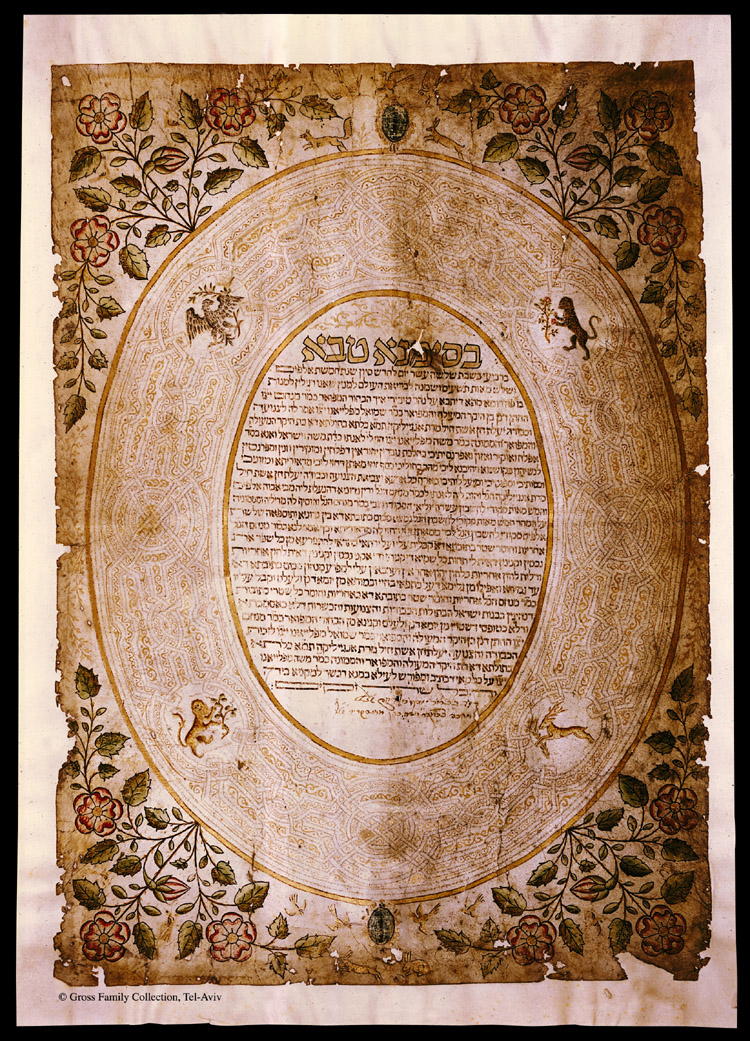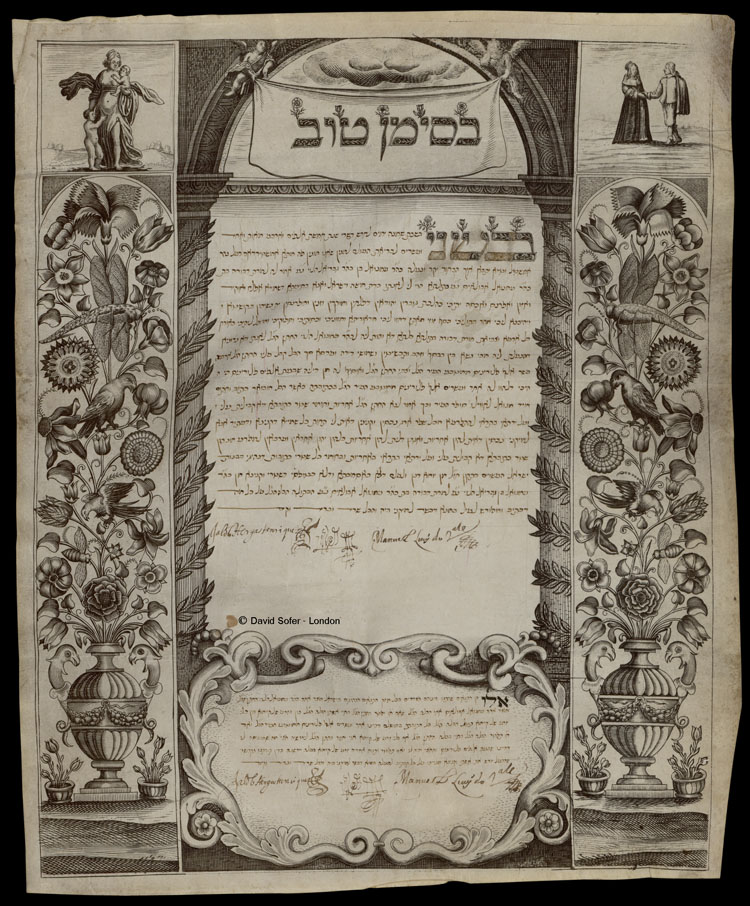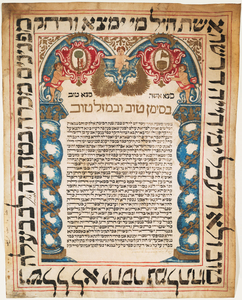Ketubah Gallery | Part 1: Tradition
Judaic decorative art has many forms and styles. Steeped in the often turbulent but for that rich and multifaceted history of the Jewish people and sometimes combined with a Jewish desire to be more modern than modern, today’s Judaic artworks express themselves with diversity of colors and shapes, of ideas and symbols. To a sensitive eye, Judaic art is a confluence of experiences through time (the long history of our nation) and space (the geographic dispersion throughout the four corners of the earth) expressed through the prism of uniquely personal vision and personal experience of the artist.
Ketubah, although essentially a legal document (and legal papers rarely find themselves a source for artistic inspiration), has been an important outlet for artistic expression for hundreds of years. Before we explore contemporary Ketubah artists, let me post here a few examples of Ketubahs of yesterday. There are a few Ketubah collections on the web; here are just a few excerpts from these that caught our attention:
These are from the New York Public Library collection:
(To see more from this collection of rare, antique ketubahs, click here: NYPL Digital Library)
Another Digital collection can be found at the Jewish National and University Library; here are a few excerpts:

Bayonne, France, 1695

Salonika, Greece, 1883

Rome, Italy, 1638

Amsterdam, Netherlands, 1661 (this printed ketubah appears in many weddings of the time.)

![[Ketubbah. Isfahan, 1881]. Digital ID: 1238124. New York Public Library [Ketubbah. Isfahan, 1881]. Digital ID: 1238124. New York Public Library](http://images.nypl.org/index.php?id=1238124&t=r)


